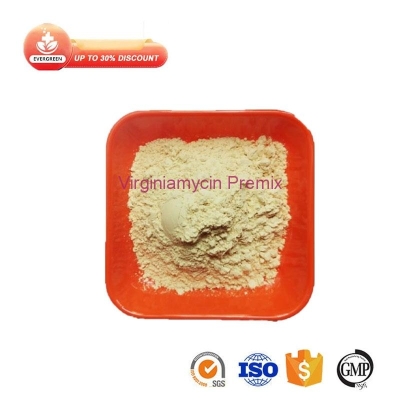Keep a wait-and-see attitude in the face of USDA report
-
Last Update: 2008-11-03
-
Source: Internet
-
Author: User
Search more information of high quality chemicals, good prices and reliable suppliers, visit
www.echemi.com
Introduction: last Thursday, soybean futures on the Chicago Board of trade (CBOT) closed up sharply The market jumped short and opened high on the same day, with strong momentum The U.S Department of agriculture's forecast on Thursday for new soybean production in 2004 was much lower than the market's expectation, supporting the market The CBOT soybean contract closed 30.5 cents higher at 585.25 cents per bushel in November, and 50.5 cents higher at 687.5 cents per bushel in August According to the latest supply and demand report of the U.S Department of agriculture, the world's soybean beginning inventory is 36.19 million tons, increased by 2.69 million tons, the output is 228.4 million tons, decreased by 1.73 million tons, the import volume is 64.48 million tons, decreased by 1.2 million tons, the domestic crushing volume is 208.51 million tons, decreased by 001.9 million tons, the export is expected to be 64.81 million tons, decreased by 1.52 million tons, and the ending inventory is 50.2 million tons Million tons, 3.2 million tons higher In 2004 / 05, the U.S soybean ending inventory is predicted to be 190 million bushels, 20 million bushels lower than the last month's forecast of 210 million bushels The U.S soybean ending inventory in 2003 / 04 is expected to be 105 million bushels, without adjustment In 2004 / 05, the U.S soybean output is estimated to be 2.877 billion bushels, which is 63 million bushels lower than the previous month's 2.94billion bushels In 2003 / 04, the U.S soybean output is predicted to be 2.418 billion bushels, which is the same as the previous month's In 2004 / 05, the U.S soybean crushing is estimated to be 1.625 billion bushels, down 20 million bushels from the last month's forecast of 1.645 billion bushels; in 2003 / 04, the U.S soybean crushing is estimated to be 1.515 billion bushels, 15 million bushels higher than the last month's forecast The U.S soybean export in 2004 / 05 is estimated to be 1.03 billion bushels, 20 million bushels lower than last month's forecast of 1.05 billion bushels, and the U.S export in 2003 / 04 is estimated to be 890 million bushels, 10 million bushels lower than last month's forecast China's initial inventory for the 2003 / 04 period is 4.47 million tons, and its output is expected to be 16 million tons, which is the same as that of last month The import volume is expected to be 16.9 million tons, 1.1 million tons lower, the pressing volume is 25.72 million tons, 1.13 million tons lower The export volume is 300000 tons, increased by 20000 tons The ending inventory is 2.1 million tons, which is the same as the forecast of last month In 2004 / 05, China's soybean initial inventory was 2.1 million tons, and the output was 17.5 million tons, no adjustment The import volume was expected to be 23 million tons, 1 million tons lower, the domestic pressing volume was expected to be 28.3 million tons, 800000 tons lower, and the export volume was 200000 tons, no adjustment The ending inventory was expected to be 4.2 million tons, 200000 tons lower Argentina's export volume in 2003 / 04 is expected to be 8 million tons, 230000 tons lower than last month's forecast The ending inventory is expected to be 12.46 million tons, 26 million tons higher than last month's forecast of 12.2 million tons, and the output is still expected to be 34 million tons In 2004 / 05, Argentina's initial soybean inventory was 12.46 million tons, increased by 260000 tons, and the output was still 39 million tons There was no adjustment The export volume was expected to be 8.27 million tons, decreased by 650000 tons, and the ending inventory was expected to be 15.97 million tons, increased by 910000 tons compared with the last month's predicted value of 15.06 million tons Brazil's export volume in 2003 / 04 is expected to be 19.5 million tons, 1.15 million tons lower than last month's forecast of 20.65 million tons, 15.85 million tons higher than last month's forecast of 13.49 million tons, 2.36 million tons higher than last month's forecast, and the output is still expected to be 52.6 million tons In 2004 / 05, Brazil's soybean initial inventory is expected to be 15.85 million tons, which is higher than the last month's forecast value of 13.49 million tons, and the output is expected to be 66 million tons There is no adjustment The export volume is expected to be 23.07 million tons, which is lower than the last month's forecast value of 23.35 million tons The final inventory is expected to be 21.47 million tons, which is increased by 2.89 million tons In the middle of August, the domestic soybean and soybean meal market still hasn't improved significantly Small and medium-sized feed enterprises, although the phenomenon of empty warehouse is more common, basically maintain a small amount of procurement, generally only meet 3-5 Tian's processing and purchasing are very cautious; therefore, even if the oil plants have strong willingness to ship, the demander's market is more and more "unprepared"; however, in recent months, the number of imported soybeans in some ports is still small, which reflects that most domestic oil plants reduce the demand for imported soybeans due to the dilemma of difficult to change losses in a short period of time (of course, international suppliers are more willing to export soybeans to China Caution is one reason Therefore, it is expected that this year's domestic new season soybeans will be affected by the above market inertia and present a slow hot situation, that is, oil companies are unlikely to rush to buy this year's domestic new season soybeans, and the peak season of domestic soybean purchase market will also be delayed Feed enterprises are not interested in purchasing, mainly because the breeding industry is still weak year on year Most of the small and medium-sized feed enterprises are in the state of short position at present Their general bearish attitude towards the future market makes them reluctant to build up stocks in large quantities at present Because the current market development situation is not clear, they are worried about the risk of cost loss At present, the breeding industry is in the process of rapid recovery The continuous rise of the price of pork and eggs has stimulated the enthusiasm of some farmers However, the consumption of feed for piglets and chicks just in the process will not be immediately increased In addition, the substitution advantage of other protein feed materials is still obvious, so the consumption of soybean meal is difficult to show in the demander market in the short term Come out Therefore, the soybean meal inventory pressure of some oil plants still needs to be further digested The oil plant will still face the buyer market of soybean meal, and the soybean purchasing strategy will be changed According to the practice of previous years, August and September are the period of accelerating the recovery of feed culture Of course, at present, pig breeding and poultry industry are in the recovery channel (aquaculture has entered the peak season) However, due to the above reasons, soybean meal demand has been difficult to significantly boost, so it will also have a great impact on the soybean raw material procurement strategy of oil plants In recent months, the speed of purchasing imported soybeans by domestic oil plants has decreased significantly Although the current monthly arrival of imported soybeans is lower than that of the same period last year, due to the long period of shutdown and production limitation of oil plants, the port stock of soybeans has reached 10% In October, the supply and demand of domestic soybeans barely maintained a balance; in addition, the capital turnover of some oil plants is still relatively difficult, so the purchase of soybean raw materials will not be in full swing; the large-scale listing of early maturing soybeans this year is expected to be in the middle of October, and the comprehensive supply market for the new season will be in November In May, it is estimated that domestic oil companies will tend to be calm and rational about the purchase of domestic soybeans this year after experiencing the market fluctuation brought by soybean cost bid up The short-term market demand is difficult to boost significantly may cause farmers to be reluctant to sell However, if the domestic new season soybeans are difficult to be purchased rapidly in a short period of time due to market inertia after they are put into operation, it is likely to cause the local soybean farmers to be reluctant to sell Last year, the market saw a "three-level jump" in the purchase price of domestic soybeans after the "11th" long holiday However, it is worth noting whether the market downturn that has lasted for several months this year will change due to the "two festivals" At present, CBOT soybean price is in a relatively low price range At present, the price of new season soybean in the United States is lower than that in Brazil in the long term Chinese oil companies are purchasing cautiously However, it is uncertain whether the U.S fund will bid up the market price due to China's entry into the market Therefore, in the second half of this year, when the purchasing situation of imported soybeans is not clear, the attitude of oil factory raw material purchasing is more wait-and-see, especially the attitude of Heilongjiang soybeans purchasing is cautious To sum up, as the trend of domestic soybean meal and imported soybean is not very clear at present, most domestic oil plants, especially those in coastal areas, keep a wait-and-see attitude at present It is estimated that the domestic oil plants will be more rational in purchasing domestic soybean this year According to the law of low growth and high growth of domestic soybean in previous years, the preheating period of Heilongjiang new season soybean purchasing market will be extended this year Long Last year, the Northeast open scale price was 2.10-2.20 yuan / kg, which is not expected to be lower this year In the later stage, the factors influencing the purchase of domestic soybeans include the weather change of the main producing areas of black soybeans in the United States and China, and the railway transportation conditions of Heilongjiang this year In addition, we need to pay attention to the fact that it is impossible for the new beans in the north to fully meet the needs of oil plants
This article is an English version of an article which is originally in the Chinese language on echemi.com and is provided for information purposes only.
This website makes no representation or warranty of any kind, either expressed or implied, as to the accuracy, completeness ownership or reliability of
the article or any translations thereof. If you have any concerns or complaints relating to the article, please send an email, providing a detailed
description of the concern or complaint, to
service@echemi.com. A staff member will contact you within 5 working days. Once verified, infringing content
will be removed immediately.







